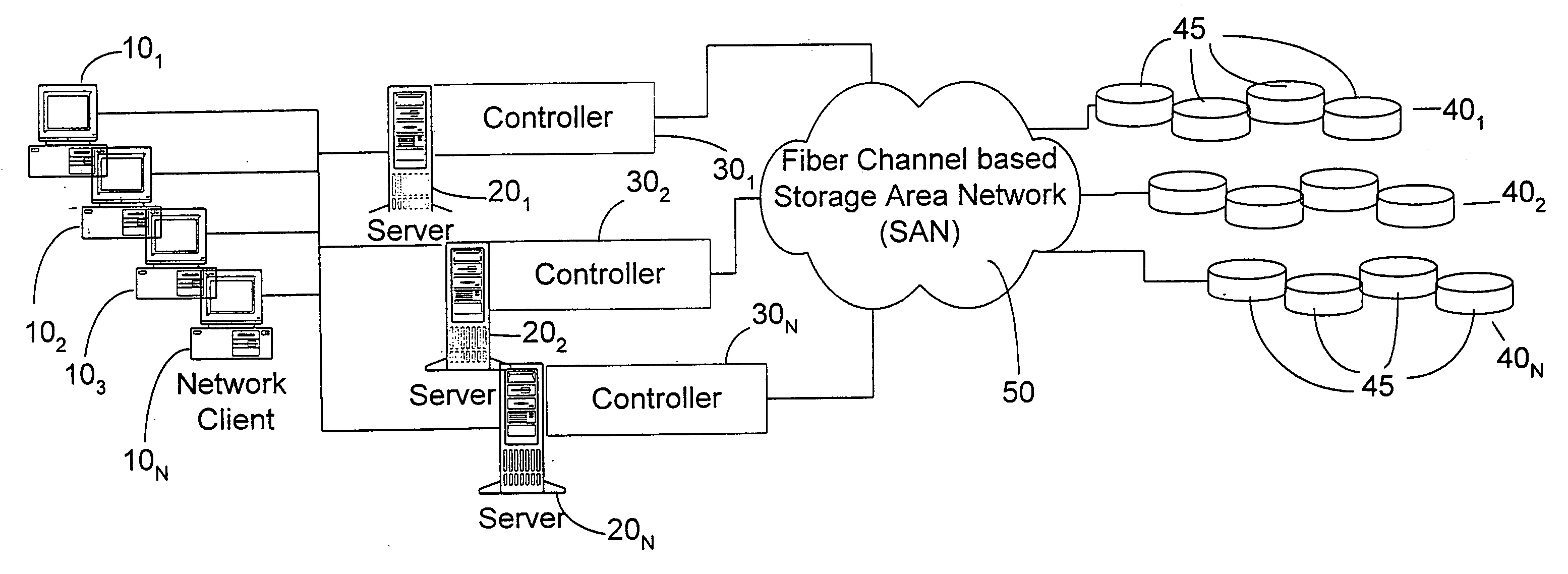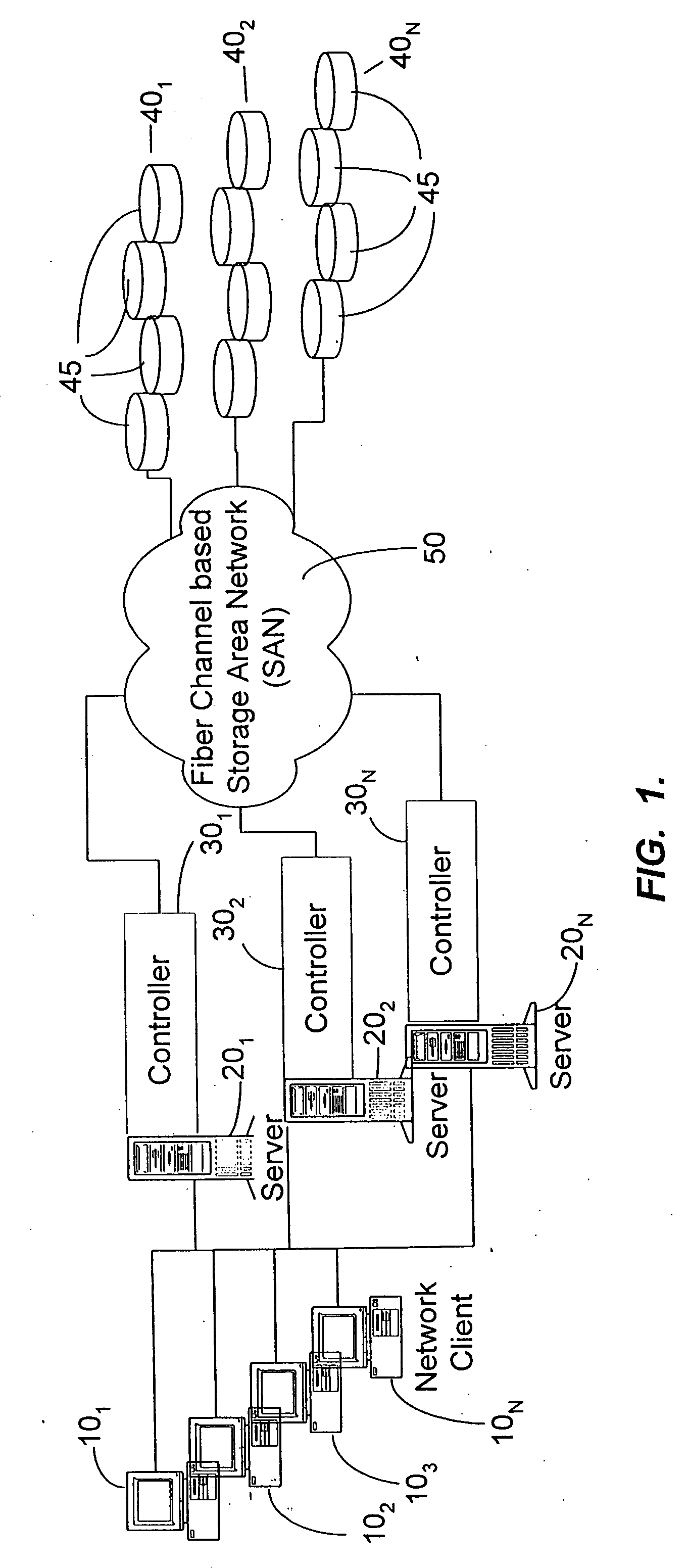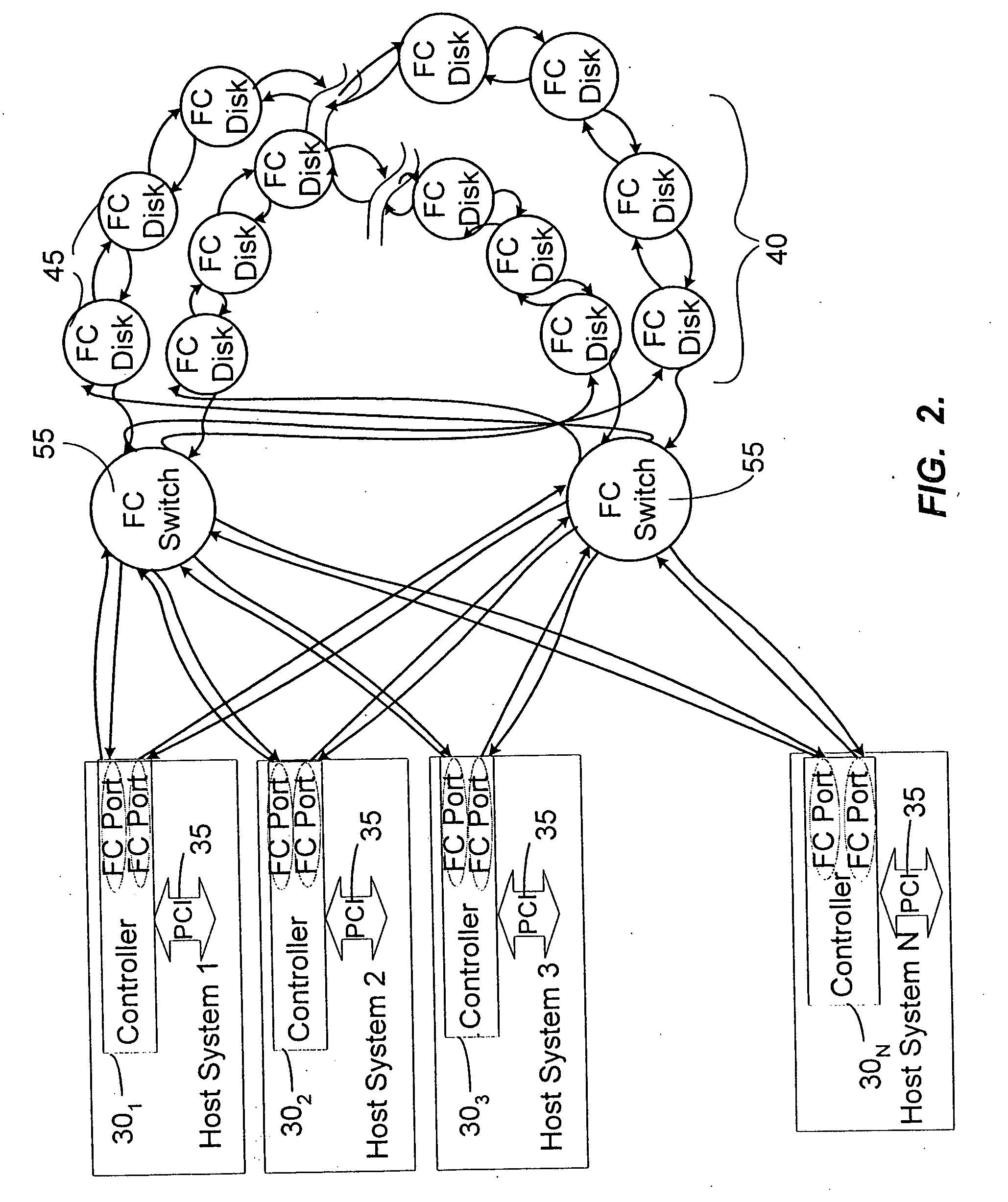Methods and systems for implementing shared disk array management functions
a technology of shared disk arrays and management functions, applied in the direction of program control, fault response, instruments, etc., can solve the problems of inaccessible information maintained in the raid system managed by the failed controller, inefficient solution, and system performance bottlenecks, and achieve high-scalability disk arrays
- Summary
- Abstract
- Description
- Claims
- Application Information
AI Technical Summary
Benefits of technology
Problems solved by technology
Method used
Image
Examples
Embodiment Construction
[0039] The present invention provides for shared redundancy group management (SRGM) between multiple AMFs so that multiple AMFs can simultaneously access the same redundancy group. According to the present invention, distributed synchronization and replication techniques are used to coordinate the activities of all AMFs sharing a redundancy group and to maintain data reliability. Access to any redundancy group can be gained through any controller that includes an AMF that is sharing control of that redundancy group. The AMFs sharing a resource group are therefore peers. Additionally, if a redundancy group is configured for shared access and a controller fails, access to data through the failed controller is blocked, but the data on the redundancy group is still intact, protected from disk failures, and accessible from any other controller that includes an AMF which is sharing that redundancy group. Within a given controller, multiple AMFs may be present, in which case redundancy gro...
PUM
 Login to View More
Login to View More Abstract
Description
Claims
Application Information
 Login to View More
Login to View More - R&D
- Intellectual Property
- Life Sciences
- Materials
- Tech Scout
- Unparalleled Data Quality
- Higher Quality Content
- 60% Fewer Hallucinations
Browse by: Latest US Patents, China's latest patents, Technical Efficacy Thesaurus, Application Domain, Technology Topic, Popular Technical Reports.
© 2025 PatSnap. All rights reserved.Legal|Privacy policy|Modern Slavery Act Transparency Statement|Sitemap|About US| Contact US: help@patsnap.com



